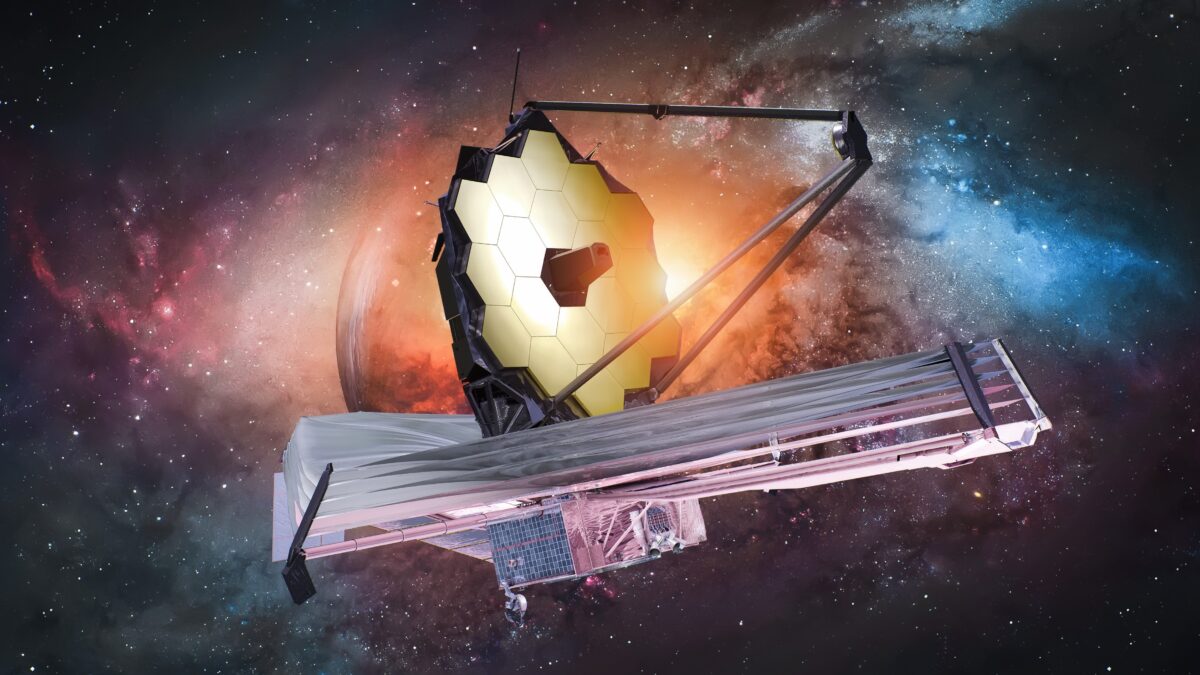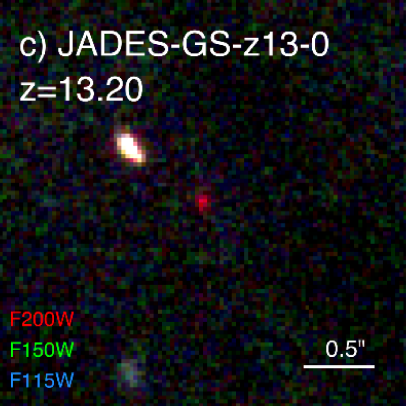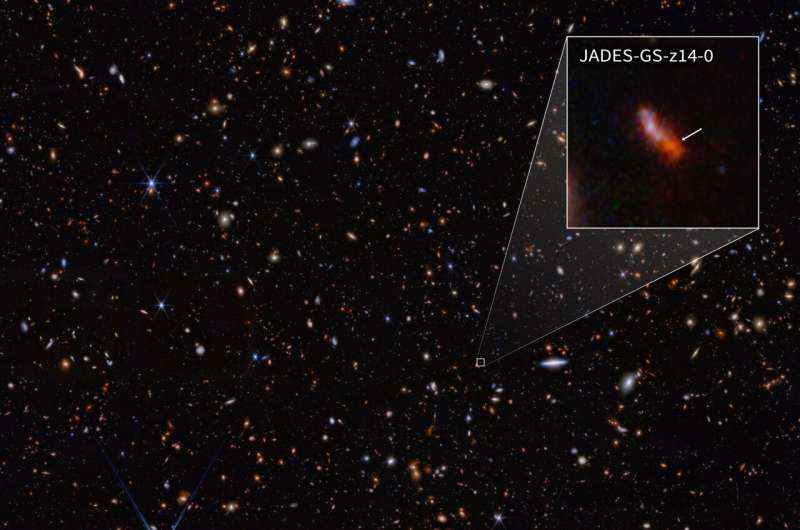Astronomers from an international team have announced the groundbreaking discovery of the two earliest and most distant galaxies ever observed, dating back a mere 300 million years after the Big Bang. This significant milestone in the exploration of the early universe was achieved using NASA’s James Webb Space Telescope (JWST). The JWST Advanced Deep Extragalactic Survey (JADES) team, led by Daniel Eisenstein from the Center for Astrophysics | Harvard & Smithsonian (CfA), was instrumental in this achievement. Key contributors from CfA include research scientists Ben Johnson and Phillip Cargile, along with Harvard Ph.D. student Zihao Wu.
The extraordinary findings display the unique capabilities of the JWST to detect a unique phenomenon known as redshift.
Redshift is the phenomenon where light from distant galaxies is stretched to longer, redder wavelengths due to the universe’s expansion. Due to the universe’s expansion, light from distant galaxies stretches to longer wavelengths during its journey. For these two galaxies, this effect is so pronounced that their ultraviolet light shifts to infrared wavelengths, making them visible only to the JWST.This effect helps astronomers measure the speed at which galaxies are moving away from us. Higher redshifts indicate greater distances and older light, allowing scientists to study the early universe and its evolution. By analyzing redshifts, astronomers can better understand cosmic history and the formation of galaxies.
The newly identified galaxies, named JADES-GS-z14-0 and JADES-GS-z14-1, are not only record holders for their distance but also provide valuable insights into early galaxy formation. JADES-GS-z14-0, the more distant and remarkable of the two, is especially notable for its size and brightness. The galaxy’s luminosity is driven by numerous young stars, as opposed to activity around a supermassive black hole, which would appear smaller.

“The size of the galaxy clearly proves that most of the light is being produced by large numbers of young stars,” explained Eisenstein, a Harvard professor and chair of the astronomy department, “rather than material falling onto a supermassive black hole in the galaxy’s centre, which would appear much smaller.”
The new discovery not only surpasses the previous record for the oldest known galaxy, which was JADES-GS-z13-0 dating back 320 million years after the Big Bang and present proper distance of approximately 33 billion light years, but also introduces fascinating new questions for astronomy.

This discovery exemplifies the rapid and large-scale formation of massive galaxies in the early universe, challenging pre-existing theories. JADES-GS-z14-0 is now considered the archetype of such early galaxy formation. Dr. Stefano Carniani of the Scuola Normale Superiore in Pisa, lead author of the discovery paper, noted, “It is stunning that the universe can make such a galaxy in only 300 million years.”
The JWST’s Near-Infrared Spectrograph (NIRSpec) was crucial in obtaining a spectrum of JADES-GS-z14-0, allowing for accurate redshift measurement and age determination. This process involves identifying the Lyman-alpha break, a critical wavelength that signifies the galaxy’s age. The results confirmed that JADES-GS-z14-0 dates back to less than 300 million years post-Big Bang.
Early indications of vigorous galaxy formation appeared in JWST’s first images and have been accumulating over the mission’s first two years. These findings contradict the expectations many astronomers had before JWST’s launch, offering new perspectives on galaxy formation theories. The close proximity of JADES-GS-z14-0 to a foreground galaxy initially puzzled the JADES team, leading them to question whether the two were neighbours. However, deeper imaging and specialised filters eventually clarified their positions.
“We just couldn’t see any plausible way to explain this galaxy as being merely a neighbour of the more nearby galaxy,” said Dr. Kevin Hainline, a research professor at the University of Arizona.
The location of JADES-GS-z14-0 in a field observed by JWST’s Mid-Infrared Instrument revealed its brightness at intermediate infrared wavelengths, indicative of hydrogen and oxygen emission in the early universe. “Despite being so young, the galaxy is already hard at work creating the elements familiar to us on Earth,” noted Zihao Wu, co-author on a second paper about the findings, led by Jakob Helton, a graduate student at the University of Arizona.
Emboldened by their success, the team obtained spectra of both galaxies, confirming that JADES-GS-z14-0 was indeed a record-breaking galaxy and that JADES-GS-z14-1 was nearly as distant. A third paper by Brant Robertson, professor at the University of California-Santa Cruz, and Ben Johnson, examines the evolution of these early galaxies.
“This amazing object shows that galaxy formation in the early universe is very rapid and intense,” said Johnson. “JWST will allow us to find more of these galaxies, perhaps when the universe was even younger. It is a marvellous opportunity to study how galaxies get started.”
The discovery of JADES-GS-z14-0 and JADES-GS-z14-1 not only sets new records but also highlights JWST’s unparalleled ability to uncover the universe’s infancy. This opens exciting new avenues for understanding the processes that shaped the early cosmos and the origins of galaxies as we know them.



